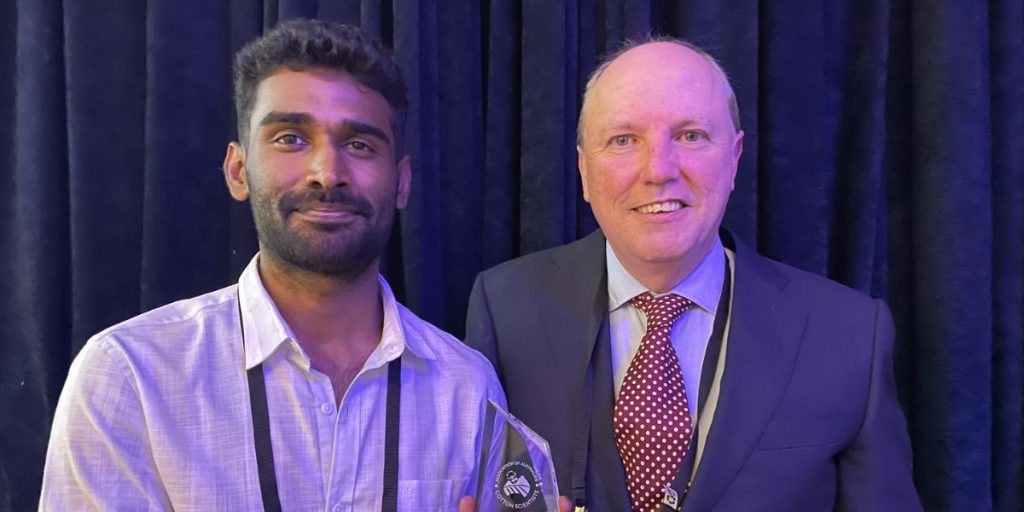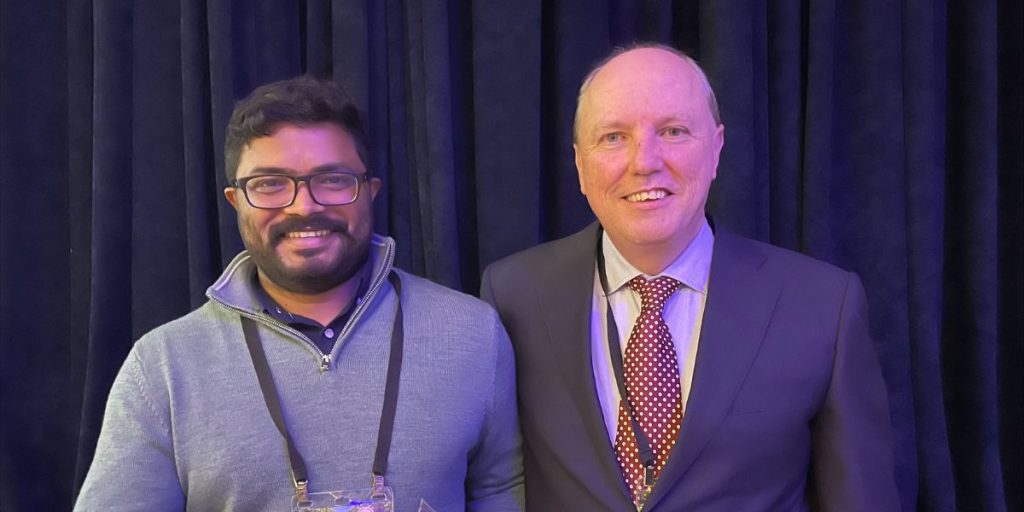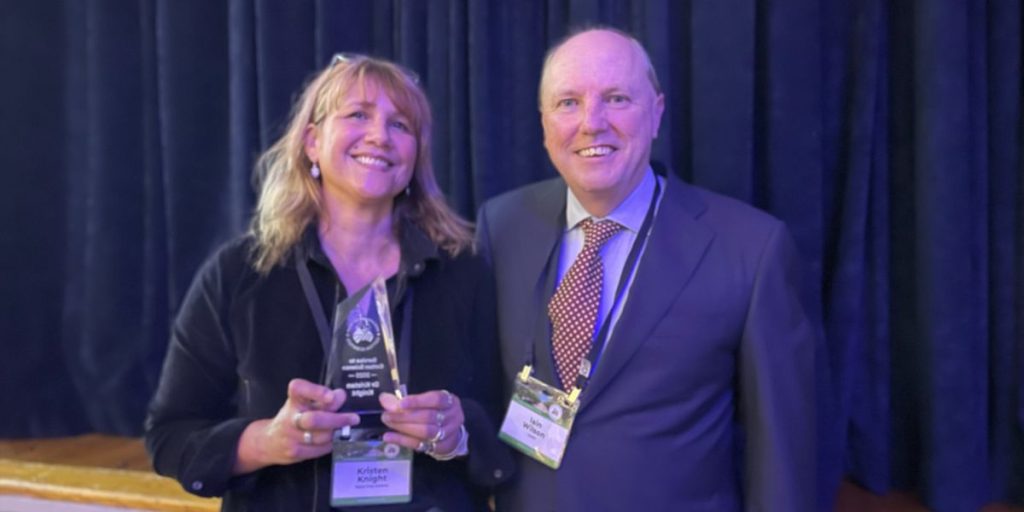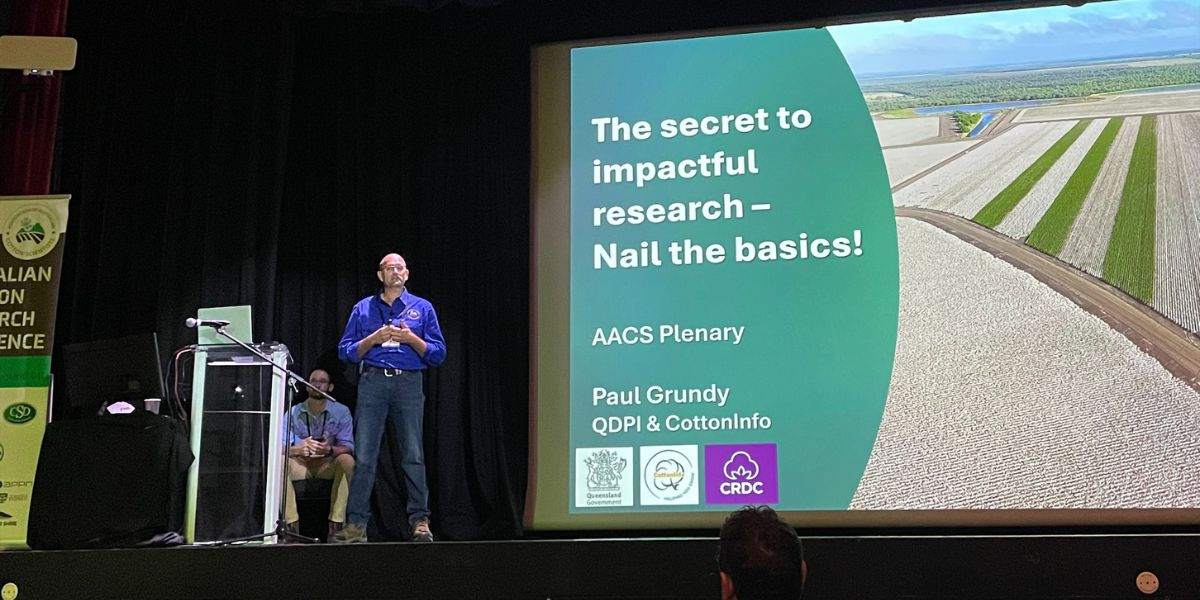Narrabri welcomed some of the world’s leading cotton scientists this week when the sixth biennial Australian Cotton Research Conference took place from August 26 to 28. The event brought together researchers, students, and industry representatives for three days of discussion, collaboration, and inspiration, confirming Narrabri’s position as a centre of agricultural innovation.
The conference was organised by the Association of Australian Cotton Scientists with support from the Cotton Research and Development Corporation. Its theme, “Innovation from the ground up,” reflected the wide scope of cotton research, encompassing everything from soil health and on-farm practices to fibre quality, breeding programs, and laboratory breakthroughs.
Presentations highlighted the latest findings and addressed both the challenges and opportunities facing the cotton industry, reinforcing the role of research in ensuring Australia’s ongoing success as one of the world’s most efficient producers of cotton.
“This year’s theme is a reflection of the fact that cotton is literally from the ground up – focusing on everything from soil, to water, to the ACDC (Australian Cotton Disease Collaboration) initiative, to the impacts of research – we really wanted this year’s conference to be as holistic as possible for the industry.” said Megan Woodward, Communications Lead for Cotton Research and Development Corporation (CRDC).
The program featured a strong line-up of speakers, including international guest Professor Jonathan F. Wendel from Iowa State University, who delivered a keynote speech exploring the evolutionary history of cotton, and offering a global perspective that linked historical knowledge to modern breeding and genetics.
Other key presentations were delivered by Dr Alison Kelly from the Queensland Alliance for Agriculture and Food Innovation and Anthony Hawes from AgBiTech, who focused on the importance of ensuring research delivers real-world impact for growers and the broader industry.
“Both the registrants and the themes discussed have been highly varied this year, but a bit standout was really around sustainability and commercialisation,” said Ms Woodward.
“We try to remain very forward focussed as an industry, drilling down on those key notions of productivity, profitability and sustainability.”
“Cotton is still a relatively small industry in Australia but our interconnectedness has always made the industry strong – we’re very inclusive and there really is nothing that isn’t shared in terms of knowledge and collaboration, the industry as a whole is also very respectful of the science and the research that is available.”
The Cotton Research and Development Corporation also hosted a “Field to Fibre” tour, which introduced newcomers to the cotton industry by showcasing the production chain from paddock practices through to fibre processing. For many of the students involved, the experience provided essential context and a clear sense of the opportunities available in cotton research.

Alongside presentations and tours, the conference provided ample opportunities for networking and community building. Proceedings began with a welcome reception at the Narrabri Bowling Club, giving participants the chance to connect before the formal sessions began. A twilight tour of the Australian Cotton Research Institute followed on the Wednesday evening, offering delegates an inside look at the pioneering research being carried out at the facility.
The event concluded with a formal dinner and awards ceremony on Thursday night, recognising the contributions of scientists making a difference in the field.
The Australian Cotton Research Conference once again placed strong emphasis on supporting the next generation of scientists, placing significant emphasis on supporting students and early-career scientists. Scholarships were provided to both undergraduate and postgraduate university students, allowing them to attend and contribute to discussions.
“Mentorship is something that the cotton industry has always done very well,” said Ms Woodward.
A total of 15 student scholarships were awarded, with 10 funded through the Association of Australian Cotton Scientists and five supported by the Cotton Research and Development Corporation (CRDC). In addition to these scholarships, CRDC provided travel bursaries to help students attend, and backed a further 19 early-career and new researchers to take part in the “Farm to Fibre” tour held the day before the conference began.
This investment ensured that emerging researchers had the opportunity to learn, connect, and gain valuable insights into the cotton industry.

The prestigious AACS Awards were presented during the final event of the Australian Cotton Research Conference—the conference dinner.
This special evening not only brings the cotton science community together in celebration, but also shines a spotlight on the outstanding contributions of members through the AACS Service to Cotton Science Award, the AACS Early Career Scientist Encouragement Award, and the AACS Scientific Publication Award.

The Narrabri conference once again showcased Australia’s standing as a leader in cotton research and innovation. With a global reputation for producing high-quality fibre through sustainable and efficient farming systems, Australia’s achievements have long been underpinned by strong research partnerships between scientists, growers, and industry bodies.
By bringing these groups together in Narrabri, the conference not only celebrated past successes but also encouraged collaboration on the challenges that lie ahead, including climate variability, pest resistance, and changing market demands.

For those who attended, the conference offered an opportunity to learn, share, and connect, while also highlighting the importance of nurturing the next generation of researchers who will continue to drive the industry forward.
The combination of world-class speakers, innovative research, and an engaged scientific community ensured that Narrabri was, for three days, was at the centre of global cotton research.
Like what you’re reading? Support New England Times by making a small contribution today and help us keep delivering local news paywall-free. Donate now

